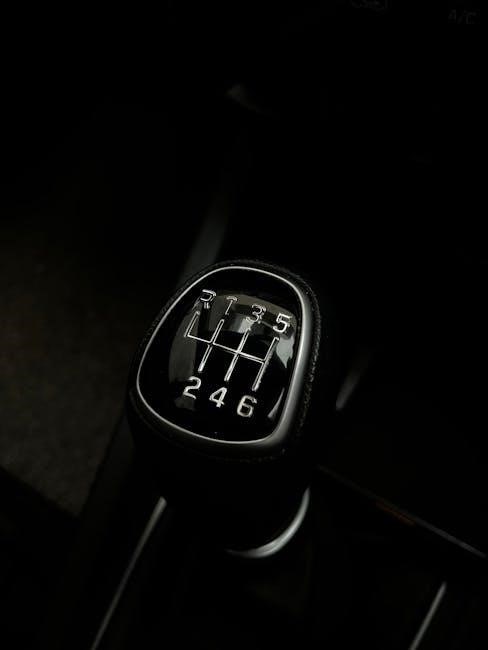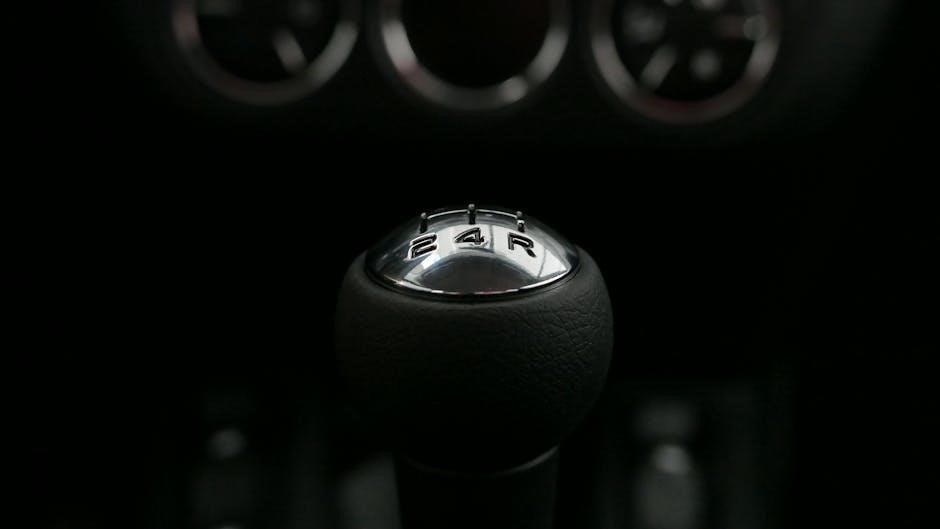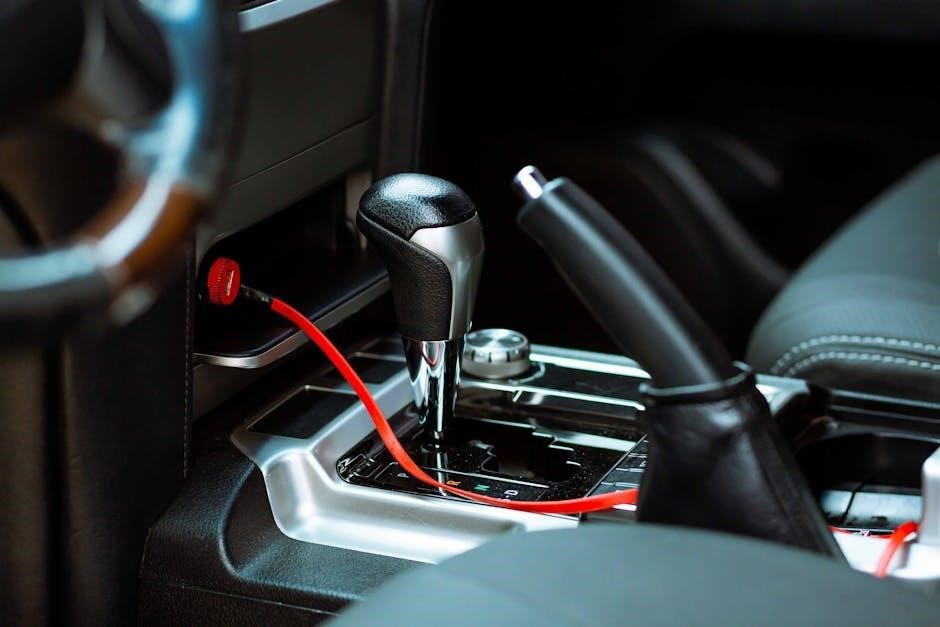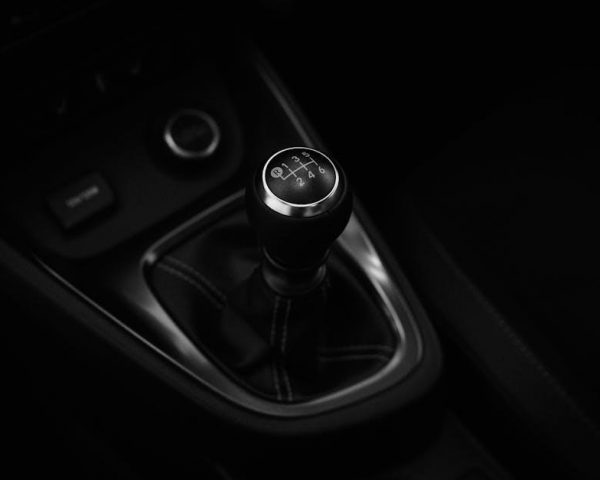A torque converter is a fluid coupling device that replaces the clutch in manual transmissions, enabling smooth power transfer between the engine and gearbox without mechanical linkage.
Definition and Basic Function
A torque converter is a fluid coupling system that connects and disconnects the engine from the transmission in automatic and some manual transmission systems. Its primary function is to allow the engine to continue running while the transmission is stationary, enabling smooth power delivery without manual clutch operation; This mechanism ensures efficient torque transfer and multiplication, particularly at low speeds, making it essential for seamless vehicle operation.
Role in Automatic vs. Manual Transmissions
In automatic transmissions, torque converters are essential for smooth acceleration and torque multiplication, enabling seamless gear shifts. In manual transmissions, they are less common but serve to replace the clutch, allowing the engine to continue running while the transmission stops. This setup reduces wear on mechanical components and provides smoother operation in specific driving conditions, though it is not a standard feature in most manual systems.
How Torque Converters Work
Torque converters use fluid coupling to transfer engine power to the transmission, multiplying torque at low speeds. The pump, connected to the engine, drives fluid to the turbine, which spins the transmission. The stator redirects fluid flow, enhancing torque multiplication for smooth power delivery without manual clutch intervention.
Fluid Coupling Principle
The fluid coupling principle in torque converters relies on hydraulic fluid to transfer rotational energy from the engine to the transmission. As the pump, driven by the engine, spins, it flings fluid outward, which then impacts the turbine blades, causing the turbine to rotate. This fluid-driven connection allows the engine to operate independently of the transmission, enabling smooth acceleration and torque multiplication, especially at low speeds, without the need for mechanical linkage or clutch engagement.
Key Components: Pump, Turbine, and Stator
The pump, turbine, and stator are essential components of a torque converter. The pump, driven by the engine, circulates hydraulic fluid to transfer energy. The turbine, connected to the transmission input shaft, rotates as fluid impacts its blades, transmitting power. The stator, positioned between the pump and turbine, redirects fluid flow to maximize efficiency, ensuring smooth energy transfer and torque multiplication during low-speed operation. Together, these components enable seamless power delivery in both automatic and manual transmission systems.
Comparison with Manual Transmission Clutches
Torque converters and manual clutches both connect and disconnect power, but converters use fluid coupling for smooth engagement, while clutches rely on mechanical friction for direct control.
Similarities in Function
Both torque converters and manual transmission clutches serve to connect and disconnect power between the engine and transmission. They enable the engine to run independently of the transmission, allowing the vehicle to come to a stop while the engine continues operating. This similarity in function ensures smooth power transfer during gear changes, whether through fluid coupling in converters or mechanical engagement in clutches, maintaining engine performance and vehicle control effectively.
Differences in Operation
Torque converters operate through fluid coupling, providing seamless engagement without driver input, whereas manual clutches rely on mechanical linkage and driver-controlled pressing. Converters allow the engine to continue running when stopped, enhancing smoothness in automatic systems. In contrast, clutches require manual disengagement and engagement, offering direct control over power transfer. This fundamental difference in operation suits automatic and manual transmissions to their respective driving styles, with converters emphasizing convenience and clutches enabling precise driver control and efficiency.

Torque Converter in Manual Transmissions
A torque converter in manual transmissions integrates fluid coupling to enable smooth gear shifts without a clutch pedal, optimizing power transfer and driver control seamlessly.
Operating Principles
In manual transmissions with a torque converter, fluid coupling replaces the mechanical clutch, allowing the engine to spin independently of the transmission. The pump drives fluid to the turbine, which engages the transmission. This setup enables smooth acceleration and gear shifts without manual clutch operation. The converter multiplies torque at low speeds, enhancing responsiveness, while the stator optimizes fluid flow for efficient power transfer. This system maintains driver control while eliminating the need for a clutch pedal, blending automation with manual precision.
Benefits of Integration
Integrating a torque converter into a manual transmission enhances drivability by eliminating the need for a clutch pedal, reducing driver fatigue. It ensures smooth power delivery during acceleration and gear shifts, improving overall vehicle responsiveness. The system also minimizes wear on mechanical components, extending transmission life. Additionally, it allows for better low-speed maneuverability and torque multiplication, making it ideal for both performance and heavy-duty applications while maintaining the control of a manual gearbox.
Advantages of Torque Converters
Torque converters offer smooth power delivery, eliminating abrupt shifts. They reduce mechanical wear, enhance low-speed torque, and simplify driving, making them ideal for both automatic and manual systems.
Smooth Power Delivery
Torque converters enable seamless power transfer by using fluid coupling, which eliminates abrupt shifts and vibrations. This ensures a refined driving experience, especially in low-speed conditions. The converter multiplies torque, providing smooth acceleration without the need for manual clutch engagement. Its operation reduces mechanical wear, enhances responsiveness, and maintains engine performance. This feature is particularly beneficial in both automatic and manual transmissions, offering a balance between efficiency and control, making it a versatile component for modern vehicles.
Reduced Wear and Tear
Torque converters minimize mechanical stress by eliminating the need for manual clutch operation, reducing wear on the transmission and engine components. The fluid coupling absorbs sudden power surges and shocks, protecting the drivetrain from damage. This results in longer component lifespan and lower maintenance costs. By handling torque multiplication smoothly, the converter reduces friction and heat buildup, ensuring a more durable and efficient power delivery system in both automatic and manual transmission setups.

Technical Challenges and Limitations
Torque converters in manual transmissions face challenges like increased system complexity and potential energy losses due to fluid coupling inefficiencies, requiring precise engineering to maintain performance standards.

Complexity in Manual Systems
Incorporating a torque converter into a manual transmission adds significant complexity. The system requires precise synchronization between the fluid coupling and mechanical gears, introducing additional components like hydraulic clutches and control mechanisms. This integration demands advanced engineering to ensure smooth operation, as the converter must seamlessly interact with the manual shifting process while maintaining driver control. The added components can also increase the overall weight and cost of the system, potentially impacting fuel efficiency and performance. Additionally, the complexity may lead to higher maintenance requirements and a steeper learning curve for drivers accustomed to traditional manual transmissions.
Energy Efficiency Concerns
Torque converters in manual transmissions can introduce energy efficiency concerns due to power loss through heat and fluid friction. While they provide smooth power delivery, the fluid coupling mechanism inherently dissipates some energy, especially at low speeds. This can result in reduced fuel efficiency compared to traditional manual transmissions, which rely on direct mechanical connections. The added complexity of integrating a torque converter into a manual system further complicates energy management, potentially offsetting the benefits of smooth operation. Additionally, the system’s ability to maintain optimal efficiency across varying driving conditions remains a challenge for engineers.

Applications in Modern Vehicles
Torque converters are widely used in performance cars for enhanced low-speed torque and in heavy machinery for smooth power delivery. Their integration into manual transmissions offers effortless driving experiences and reduced wear, making them a versatile component in modern vehicles.
Performance Cars
Modern performance cars increasingly adopt torque converters in manual transmissions to maximize low-end torque and acceleration. This setup allows drivers to achieve faster launches and smoother power delivery, enhancing overall performance without sacrificing the control of a manual gearbox. The fluid coupling principle enables seamless torque multiplication at low speeds, making it ideal for high-performance applications where instant responsiveness is crucial. This integration bridges the gap between automatic and manual transmissions, offering the best of both worlds for driving enthusiasts.
Heavy Machinery and Trucks
Torque converters are widely used in heavy machinery and trucks to enhance low-speed torque and reduce the need for frequent gear shifts. This is particularly beneficial in construction equipment and large vehicles, where maintaining steady power output is essential. The fluid coupling mechanism allows for smooth engagement and disengagement, reducing wear on mechanical components and improving operational efficiency. This makes torque converters a critical component in ensuring the productivity and longevity of heavy-duty machinery and trucks.
Future Trends
Advancements in torque converter design are focusing on improving efficiency and integration with hybrid systems, offering enhanced performance and reduced energy consumption in modern transmissions.
Innovations in Design
Modern torque converters feature advanced designs, including optimized blade angles and multi-stage torque multiplication, enhancing low-speed torque delivery while reducing slip and improving fuel efficiency. These innovations enable smoother acceleration and better integration with both automatic and manual transmissions, addressing the need for improved performance across various driving conditions and vehicle types.
Integration with Hybrid Systems
Torque converters are increasingly integrated into hybrid systems, enabling seamless power transitions between internal combustion engines and electric motors. This integration enhances fuel efficiency and reduces emissions by optimizing torque delivery during hybrid mode operations. Advanced control systems synchronize the torque converter with hybrid components, ensuring smooth power transitions and improving overall drivetrain efficiency in modern eco-friendly vehicles.


